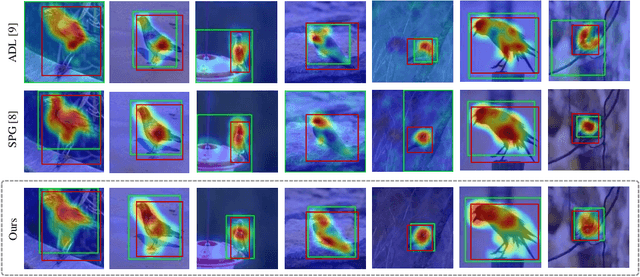In-sample Contrastive Learning and Consistent Attention for Weakly Supervised Object Localization
Paper and Code
Sep 25, 2020



Weakly supervised object localization (WSOL) aims to localize the target object using only the image-level supervision. Recent methods encourage the model to activate feature maps over the entire object by dropping the most discriminative parts. However, they are likely to induce excessive extension to the backgrounds which leads to over-estimated localization. In this paper, we consider the background as an important cue that guides the feature activation to cover the sophisticated object region and propose contrastive attention loss. The loss promotes similarity between foreground and its dropped version, and, dissimilarity between the dropped version and background. Furthermore, we propose foreground consistency loss that penalizes earlier layers producing noisy attention regarding the later layer as a reference to provide them with a sense of backgroundness. It guides the early layers to activate on objects rather than locally distinctive backgrounds so that their attentions to be similar to the later layer. For better optimizing the above losses, we use the non-local attention blocks to replace channel-pooled attention leading to enhanced attention maps considering the spatial similarity. Last but not least, we propose to drop background regions in addition to the most discriminative region. Our method achieves state-of-theart performance on CUB-200-2011 and ImageNet benchmark datasets regarding top-1 localization accuracy and MaxBoxAccV2, and we provide detailed analysis on our individual components. The code will be publicly available online for reproducibility.
 Add to Chrome
Add to Chrome Add to Firefox
Add to Firefox Add to Edge
Add to Edge